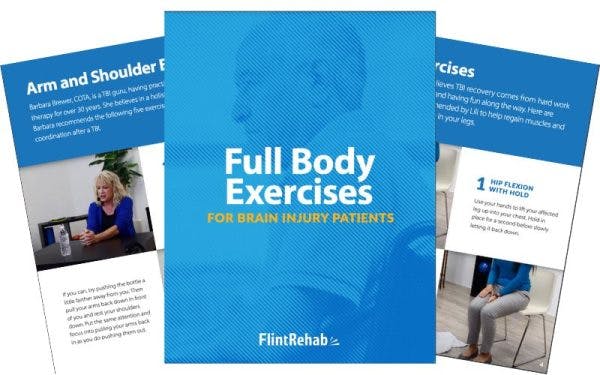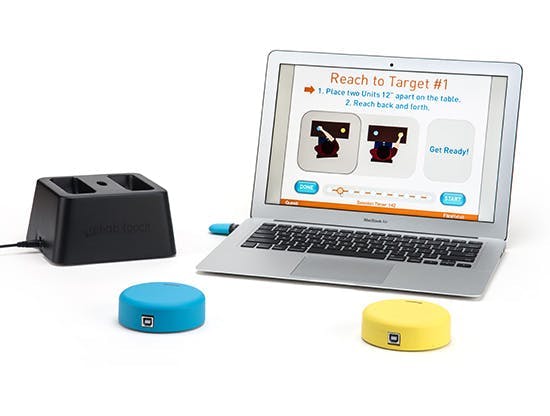Recovering from a traumatic brain injury (TBI) is a complex process. While physical symptoms like balance issues or headaches may take center stage, another often-overlooked challenge can sneak in quietly but powerfully: noise sensitivity also known as Hyperacusis.
Hyperacusis is when everyday sounds like a microwave beep, group conversation, or clinking dishes feel overwhelming after your injury. And you’re not alone because this condition is surpisingly common after concussions or brain injuries.
In this article, we’ll explore:
- What noise sensitivity is and how it develops after a brain injury
- The difference between hyperacusis and other sound disorders
- Strategies to manage symptoms through desensitization
- Ear-level technologies and sound filters that can offer relief
Let’s dive in!
If you want to skip straight to a section just tap the link below:
- What is Hyperacusis?
- Why Does Sound Sensitivity Happen After TBI
- Daily Challenges of Hyperacusis
- Can Hyperacusis Go Away After TBI?
- Treating Hyperacusis
- Ear Technology for Hyperacusis
- When to Seek Professional Help
- Supporting Someone With Hyperacusis
- Recovery Timeline for Hyperacusis
What Is Hyperacusis?
Hyperacusis refers to an increased sensitivity to sound, where noises that most people find normal or even quiet can feel painfully loud or startling.
It’s not just about being annoyed by sound. For someone with hyperacusis, the experience can trigger physical symptoms like:
- Headaches
- Dizziness
- Anxiety or panic
- Irritability
- Nausea
Hyperacusis is different from tinnitus (ringing in the ears), although the two can co-exist. It’s also different from misophonia, which involves strong emotional reactions to specific sounds.
In people with TBI or concussion, hyperacusis may result from changes in how the brain processes sound. This may be due to damage in certain areas of the brain, including the orbitofrontal cortex, the anterior cingulate cortex, and the supplementary motor area. Even if your hearing test shows normal results, the brain’s ability to filter or interpret sound can be disrupted.
Why Does Sound Sensitivity Happen After TBI?
After a brain injury, especially a concussion or mild TBI, the brain may struggle to filter sensory input. That includes tactile input, sights, smells, and sounds. The result can feel like sensory overload, where multiple stimuli come in at once without the brain’s usual ability to prioritize or tone them down.
Here are a few possible explanations for sound sensitivity after a brain injury:
- Central Auditory Processing Disruption: Even if your ears are fine, your brain might not process the input correctly. This can make normal sounds feel exaggerated.
- Nerve Damage: Injury to the auditory nerve or brain regions responsible for hearing can heighten sensitivity.
- Heightened Startle Reflex: Some TBI survivors develop an increased startle response, making sudden or loud sounds more distressing.
- Sensory Gating Impairment: The brain’s filter, which helps block out background noise, might not work as well after a concussion.
People with post-concussive syndrome are especially prone to this. And for some, the sensitivity doesn’t go away quickly. It can last for months or even years if not addressed.
Daily Challenges of Living With Hyperacusis After Brain Injury
The impact of sound sensitivity after a brain injury is more than just discomfort. It can limit everyday life in frustrating ways:
- Avoiding Social Settings: Loud restaurants, shopping malls, or crowded family gatherings may feel intolerable.
- Trouble With Work or School: Background noise in offices or classrooms can be overwhelming, making it hard to concentrate.
- Emotional Toll: Constantly bracing for sound can create ongoing stress, anxiety, or depression.
- Sleep Disruption: Even moderate noise during the night may interfere with rest.
Many people describe it as a constant state of tension, always on edge and waiting for the next burst of overwhelming noise.
Can Hyperacusis Go Away After TBI?
The good news is that sound sensitivity after a brain injury often improves with time, especially when it’s part of post-concussion syndrome. However, for some people, symptoms persist long-term without active treatment.
If your hyperacusis continues beyond 3 to 6 months, or if it’s interfering with your ability to function, it’s important to seek help from a medical professional. Ideally, you should look for someone experienced in neurorehabilitation, audiology, or otolaryngology.
Treating Hyperacusis After Brain Injury: Desensitization Strategies and Gradual Exposure to Noise
While there are a number of treatment strategies used for hyperacusis, one of the most promising ways to treat hyperacusis after TBI is through sound desensitization therapy. The concept is simple: gently reintroduce sound in a way that helps the brain relearn how to process it without triggering a stress response.
Here’s how it often works:
1. Controlled Sound Exposure
Start by listening to neutral sounds such as white noise, nature sounds, or soft instrumental music at a very low volume. Over time, you gradually increase the volume or complexity. This can be done:
- At home with a speaker or headphones
- Through an audiologist-supervised program
- Using sound therapy apps
Consistency is key here. Daily exposure, even if brief, helps the nervous system adapt and rebuild tolerance.
2. Avoid Total Silence
While it may seem helpful to retreat into silence, avoiding all sound can actually worsen hyperacusis over time. This is because the brain becomes more reactive the longer it goes without stimulation.
Instead, try keeping some gentle ambient sound in the background throughout the day.
3. Track Your Progress
Keep a journal of sound exposure, discomfort levels, and emotional reactions. Over time, you may notice that your tolerance gradually improves even if the progress feels slow at first.
4. Use Relaxation Techniques
Combining sound exposure with calming activities like breathing exercises, meditation, or gentle movement can reduce the anxiety associated with noise. This helps break the fight-or-flight response that often accompanies hyperacusis.
Over time, you would gradually reintroduce louder and more intrusive sounds until you recover to a more normalized state.
Research has shown that combining sound therapy with psychoeducation, relaxation techniques, counselling, and cognitive behavioral therapy can be especially effective.
Ear-Level Tech Tools and Filters That Can Help With Hyperacusis
Alongside gradual desensitization, many TBI survivors find relief using ear-level devices and technologies that reduce the harshness of environmental noise. These tools don’t block all sound, but instead soften or filter it to make life more manageable.
1. Filtered Earplugs
These aren’t the foam plugs used for sleeping. Filtered earplugs reduce the volume of environmental sounds while preserving clarity. They’re helpful for:
- Restaurants
- Public transit
- Busy streets
Popular brands for filtered earplugs include Etymotic, Loop, and Vibes.
2. Noise-Canceling Headphones
Over-ear noise-canceling headphones can provide relief in noisy environments. Many people use them:
- In grocery stores
- At medical appointments
- During air travel
Some models also allow ambient sound adjustment, so you’re not completely isolated. This can be important to preventing overload when you remove the headphones.
3. Hearing Aids with Sound Therapy Features
For individuals whose hyperacusis is paired with hearing loss or tinnitus, some modern hearing aids offer customizable sound filters, white noise generators, or desensitization programs. These are typically managed by an audiologist.
4. White Noise Machines or Apps
Whether it’s a bedside device or a smartphone app, white noise generators can help:
- Calm the nervous system
- Provide predictable background sound
- Support sleep and focus
Apps like myNoise or ReSound Relief let users adjust tones and frequencies based on their personal sensitivities.
When to Seek Professional Help
If you’ve tried self-managed strategies and are still struggling with daily sound sensitivity, it’s time to speak with a professional. Consider reaching out to:
- A neurotologist or audiologist familiar with TBI
- An occupational therapist who specializes in sensory processing
- A neurologist or brain injury rehabilitation clinic
Treatment plans may include:
- Audiologic desensitization therapy
- Cognitive-behavioral therapy (CBT) for managing stress
- Medication for underlying anxiety or neurological symptoms
- Surgery may be used in some cases as a last resort
Remember, the earlier you address sound sensitivity, the better the chances of long-term improvement.
Supporting Someone With Hyperacusis After TBI
If a loved one is dealing with post-TBI noise sensitivity, here are a few ways you can help:
- Be Patient: They’re not being dramatic. The discomfort is real and often unpredictable.
- Ask Before Making Noise: Even small things like clapping, vacuuming, or loud conversations can be painful.
- Offer Quiet Breaks: In group settings, help create opportunities for rest or a quieter space.
- Encourage Small Wins: Celebrate gradual progress in tolerance, even if it’s just staying in a noisy space for five more minutes than before.
Support and understanding make a big difference during recovery.
Recovery Timeline for Hyperacusis Following Brain Injury
Like many post-concussion symptoms, sound sensitivity usually improves in stages. Some people feel better within weeks. Others need months of slow, structured desensitization.
Here’s what a typical recovery path might look like:
- 0–3 Months Post-Injury: Rest, basic sound avoidance, white noise at night
- 3–6 Months: Begin low-level exposure therapy and experiment with filtered earplugs
- 6–12 Months: Increase exposure, track improvements, add technology aids
- 12+ Months: Full or partial recovery in most cases, though some individuals may continue using coping tools long-term
Every journey is different. The key is not to give up hope even if progress is gradual.
Final Thoughts on Hyperacusis and Sensitivity to Sound
Sound sensitivity after a brain injury can feel isolating, frustrating, and at times invisible to others. But with the right tools, strategies, and support, it’s absolutely possible to reclaim comfort in daily life.
Whether you’re just starting your recovery or have been dealing with hyperacusis for years, remember that your brain is still capable of change. Gradual exposure, ear-level tech, and a supportive environment can all help quiet the noise and help you feel like yourself again.









